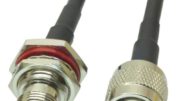A few decades ago, I was one of the people who applauded the loudest when Microsoft added the “sleep” option to Windows. And yet, today, I’ve almost completely stopped using it. Should you?
Why this was so big
Windows95 was a huge step forward in the evolution of operating systems. It was the first time Windows could properly even be called an operating system. Before that it was really just an app that ran on top of the DOS operating system. This limited what you could do with it. But, with Windows95, the sky became the limit. And so, developers set out to do practically anything they wanted with the OS. A lot of this was in the form of add-ins that loaded when you started things up. Each add-in increased startup time by a second or two. Not a big deal, until you have 30 of them, really.
By the time Windows XP came out in 2001, the problem had really begun to set in. I recall that my computer at the time, which was fairly powerful, took nearly two minutes to properly start up. It was “usable” after only about 45 seconds, but background apps kept loading and made a slow mess unless you let it sit. The best way to deal with the problem was to start your PC then go get a cup of coffee.
The miracle of “sleep”
Sleep mode allowed the computer to stop doing most things, turn off the monitor, and let you go home for the night. When you came in the next morning, a tap on the keyboard would wake it up. Generally you were in business after only about 15 seconds. This was a massive improvement. I jumped on this option right away.
Another big improvement came with “hibernate” mode, which saved the contents of memory to your hard drive. This let you properly power down the computer if you wanted to. Powering it back up would bring you right back where you were. This often meant at least 5 minutes saved launching apps and such.
Flash forward to today
“Flash” forward is really the best word because it’s flash memory that’s rendered the whole “sleep” thing obsolete. I’ll explain, but I need to mention a few things first.
By about 2010, enough people had complained about long PC startup times that Microsoft started doing something about it. They stopped being so aggressive with pre-loading things, and also became more efficient about how they started things up and what they tested and checked along the way. Integrating malware protection into the OS meant that the biggest and baddest culprit, third-party virus checkers, could be left out. The PC I had ten years ago only took about a minute to fully start up, which was a big improvement.
Modern version of Windows also implemented a “fast startup” option which essentially stopped checking most things on your PC if there was no reason to suspect anything had changed. This made a difference and it turns out, all that checking wasn’t as necessary as we had thought.
The real change, though, came fairly recently. Solid state drives have become cheap enough that they’ve replaced traditional hard drives in most new PCs. SSDs are faster, use less power, and last virtually forever. It’s the SSD that lets everything from your phone to your work computer start almost instantly and remain ready to use whenever you need it.
With my newest computer, a full startup takes around 7 seconds. This is maybe 3 seconds longer than it takes to awaken from sleep. Fully shutting down means less power used and there’s really no downside. So, I tell people not to use sleep mode anymore.
Forget “hibernate” ever existed
Hibernate mode was a good idea in the past. Another mode, “hybrid sleep” was supposed to be the best of both worlds. You got to wake up the computer instantly if you came back to it after a short time. After a few hours, or if the battery became drained, the contents of memory would be saved to your hard drive so you wouldn’t lose anything.
The problem soon became that “hibernate” took longer than a full startup. Startup had become more efficient, and computers came with more memory. This meant that you were spending more time saving memory to hard disk.
I recommend that people never use the “hibernate” setting, ever. If your computer runs low on battery, it will hibernate so you don’t lose your work. But you’ll find the startup takes longer after that happens and it’s not a good deal for anyone anymore.
That’s my experience. What’s yours?
Do you still put your computer in “sleep” mode? Or do you just leave your work PC on all the time with the monitor off? How has it affected your daily routine?
This article is brought to you by Solid Signal. Shop at Solid Signal for the PC accessories you need. If you’d rather get personalized service, call 888-233-7563 or fill out the form below.





